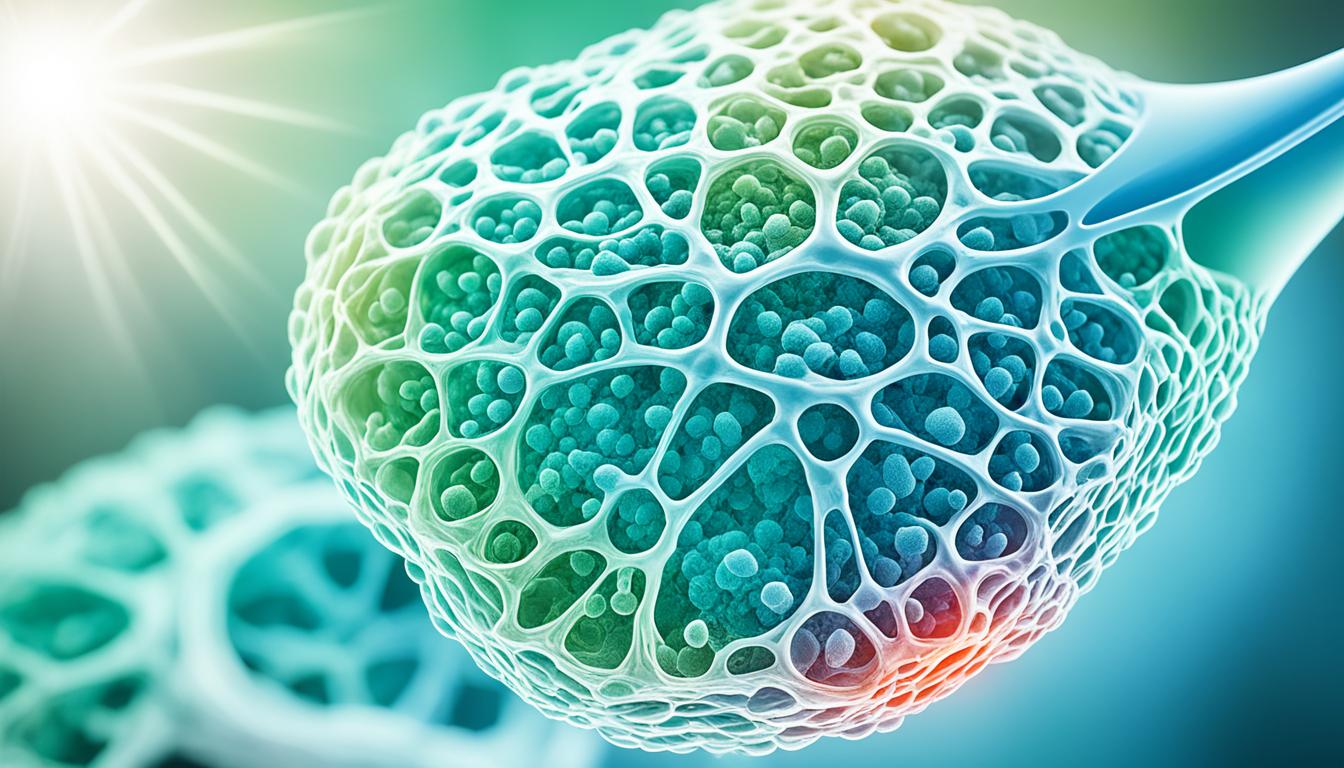Welcome to our article on hay fever, also known as allergic rhinitis. If you’re sneezing, itching, or have nasal issues, you’re not alone. This article explains the common allergic reaction.
Hay fever comes from our body’s responses to things like pollen and dust. These reactions, often through IgE, affect up to 40% of adults and 25% of children worldwide. Current treatments help, but they don’t solve the allergy itself.
But, there’s hope. Research into treatments like stem cell therapy is ongoing. These new therapies aim for long-term improvement by tackling the root of the allergic reaction.
If you want to learn more about hay fever and its treatments, keep reading. We’ll cover symptoms, causes, diagnosis, and the exciting possibility of stem cell therapy.
The Role of Mesenchymal Stem Cells in Allergic Rhinitis
In the last few years, people have shown more interest in the promise of mesenchymal stem cells (MSCs). They’re considered for treating several diseases, including allergic rhinitis. In this field, MSCs have given hope by their ability to control allergic reactions. This helps hay fever and other pollen allergies.
MSCs come from different body tissues like bone marrow or umbilical cord. They are special because they can change into many types of cells. Plus, they produce substances that help other cells grow and heal.
MSCs can change the way our immune system reacts in allergic rhinitis. They have a unique role in stopping certain white blood cells’ activity, thus lessening allergic reactions. They can also help a type of cell that keeps our immune system in check.
Moreover, MSCs adjust the levels of important signaling molecules linked to our allergic reactions. This action eases allergies’ usual signs, including sneezing and blocked nose.
MSCs have a natural talent to move to where the body needs healing. This means they can go straight to the place affected by allergies, the nasal mucosa for example. Close-up, they can help balance the immune response in that specific area.
Although the use of MSCs in allergies is still at the animal experiment stage, their potential is exciting. Their ability to modify our immune reactions offers new hope for better, more direct treatments.
Current Research on MSCs in Allergic Rhinitis
Several studies aim to see if MSCs could help with allergic rhinitis. For instance, a research in the “Allergy” journal looked at how MSCs affect allergic rhinitis in mice. The findings were positive, showing improved nasal function after MSC treatment.
Another piece of research, in the “Journal of Immunology”, also highlighted MSCs’ calming effect on the immune system. It showed these cells can repress activities of certain immune cells and adjust cytokine production.
These studies offer a glimpse into MSCs’ potential against allergic rhinitis. But, we still need more research to fully understand and truly tap into their healing powers.
Current Therapeutic Strategies for Allergic Rhinitis
Now, treating allergic rhinitis mainly tackles the symptoms, not the immune problem itself. Drugs are often used to manage symptoms. These drugs include antihistamines, steroids, and nasal decongestants. Yet, they don’t stop allergic reactions.
Immunotherapy is a method that tries to make patients less sensitive to allergies. This approach is not fast; it requires patience. Patients either get shots or take tablets under the tongue. The goal is to decrease the allergy symptoms and the need for drugs.
For severe cases, surgery is sometimes an option. But, its use is debated because other treatments exist. It’s usually saved for when nothing else works.
Comparison of Therapeutic Strategies:
| Treatment | Benefits | Limitations |
|---|---|---|
| Drug Treatment | Offers short-term relief from symptoms | Doesn’t fix the immune imbalance |
| Specific Immunotherapy | Can halt the disease’s progress | It takes a long time and needs patient cooperation |
| Surgery | For very severe cases | Has uncertain outcomes and isn’t the first choice |
Though we can ease allergic rhinitis symptoms, we aim to find more lasting treatments that fix the immune issue. Looking ahead, treatments like using stem cells could be game-changers. They might offer long-term relief by adjusting how our immune system works. Better therapies in the future can substantially help those with allergic rhinitis, making seasonal allergies less of a burden.
Conclusion
Hay fever is a common allergy that affects the inside of your nose. It causes sneezing, itching, and a runny or stuffy nose. Current treatments help with symptoms but don’t fix the main issue.
Stem cell therapy brings hope for a better solution. It works by changing how the immune system reacts, which could lead to lasting relief. This could greatly improve the lives of those with hay fever.
For stem cell therapy to really work, more research is needed. This research will help us understand the immune system’s role in allergies better. It will also lead to treatments that target the real cause of hay fever.

